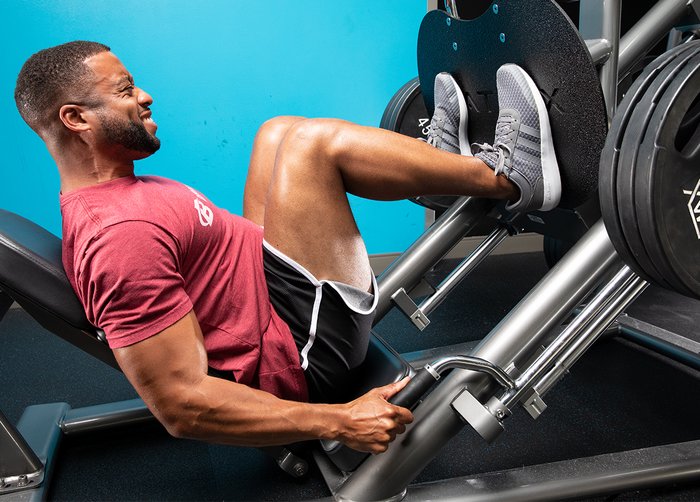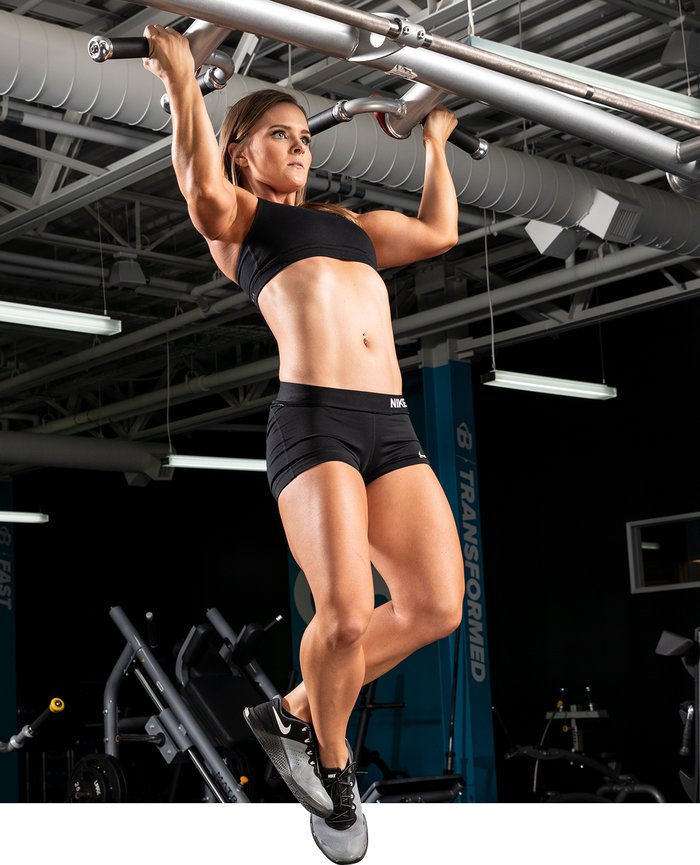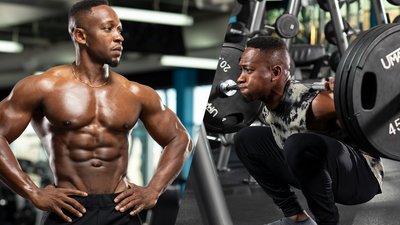It's hard to obtain a perfect physique, although some champions have certainly approached that zenith through a combination of genetic blessings and sheer hard work and dedication. The rest of us struggle with very common physical shortcomings, some of which are hereditary, while others are the result of our own misguided efforts, ignorance, or lack of attention.
I can't promise you the secrets to crafting a perfect physique, but I can offer these fixes to the four most common flaws in the male physique.
Flaw 1: You're Top-Heavy
This is by far the most common physique imbalance you will see on any male who weight trains. Most guys love training their chest and arms. Back and shoulders come in a distant second. If any training day is skipped, you can bet your entire stash of protein and pre-workout powders that it's leg day. The result, over time, is an upper body that looks rugged and packed with power, but appears to be attached to someone else's lower body—and that someone is weak and small. Hence the saying that some people's upper body should sue their lower body for lack of support.
The Fix

Train your damn legs! In fact, you should hit them twice a week, so they catch up. Effective leg training is not easy. It's brutally hard work. But the rewards are well worth the effort. So, get to work on squats, leg presses, hack squats, Romanian deadlifts, leg curls, leg extensions, and calf raises. Eventually, your lower body will look just as thick and muscular as your upper body, and you will have a much more impressive and complete physique.
Flaw 2: You Have a Wide Waist
You can thank your parents for this one, because your bone structure is 100 percent genetically dictated, and it's the framework that you build your muscles upon. The ideal physique, however, almost always features a pronounced V-taper, the visual effect of wide shoulders and upper back that taper down to a narrower waist, that many of us are just not capable of achieving.
The Fix

Like I said, your bones are what they are. That's the bad news. The good news is that you can build your side delts and upper back to the point where you create greater width up top, eventually causing that taper effect. For your upper back, you need to do plenty of wide-grip chin-ups as well as lat pull-downs with a wide overhand grip. You can blow out your side delts with lateral raises using dumbbells, machines, and cables, as well as wide-grip upright rows using a barbell or dumbbells.

Flaw 3: Your Pecs Are Droopy
The bench press has been a marker of strength since gasoline was 25 cents a gallon, and it's an excellent mass-building movement for the pectorals. The problem is that, if someone focuses entirely on the flat barbell bench press, as so many have done, there is a tendency for the middle and lower regions of the chest to become highly developed, while the upper region remains flat and shallow. Over time, this will result in a droopy look to the chest, with its bulk of muscle mass in the lower region.
The Fix

At the very least, start your chest workouts by blasting the upper chest with either barbell or dumbbell incline presses. Only once you have thoroughly taxed your upper chest should you move on to any type of flat press. In situations where there is an extreme imbalance and virtually no upper-chest development to speak of, I would even go so far as to suggest that you only do various types of incline presses along with incline dumbbell flyes, finishing up with a pec fly machine or cable cross-overs.
Don't worry that your middle and lower chest will shrink. There will be enough residual stimulation from incline presses and fly motions to maintain their mass. Meanwhile, your upper chest can finally start catching up. Once you have a chest that's thick and full, from clavicle to sternum, you will own a set of pecs that has that rare, complete look and will stand out in any crowd, in anything you wear.
Flaw 4: You Look as Soft as a Marshmallow
Many guys in the gym are "perma-bulkers," locked into a perpetual off-season, always striving to add pounds on the scale and to the bar. That's admirable, in a way, because bodybuilding is supposed to be about "building." But in a quest to gain lean muscle mass, many lifters eat a lot more than is truly required for gains. Often, they also shun cardio out of fear that the extra activity will drain their caloric surplus. The net result of excessive caloric intake plus limited caloric burning is a soft-looking body, with gains in muscularity hidden beneath a thick layer of mush.
The Fix

Clean up your diet. Even when bulking, stop eating things like cookies, donuts, ice cream, cake, pizza, french fries, candy bars, and greasy fried food or fast food. Don't drink any more regular soda or fruit smoothies (which are loaded with sugar). Start eating freshly-prepared foods like grilled or baked chicken and fish, egg whites, extra-lean ground turkey, rice, oatmeal, sweet potatoes, and raw vegetables. If you have salads— and you should—opt for vinaigrette dressing instead of fat and calorie-laden types like Ranch or Thousand Island. When it comes to carbs, start cutting back until you arrive at a daily amount that gives you only enough energy for great workouts and pumps.
Finally, do some damn cardio! Hit the incline treadmill, stepper, or elliptical trainer for 20-30 minutes after your weights. Don't be terrified of losing your gains by leaning out. You might be pleasantly surprised to find that dropping body fat helps your metabolism reset and enhances your training results. It also reveals the gloriously hard, dense musculature beneath. You will be lighter on the scale, but everyone will tell you how much bigger and more impressive you look!

